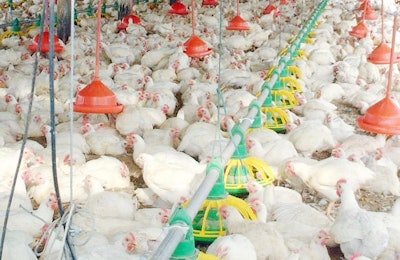
Transitioning to antibiotic-free broiler production, or significantly reducing use of antibiotics, raises a whole host of issues, and not least among these is whether production can remain profitable and competitive.
There is precious little long-term data available addressing this, but a recently published study in the Netherlands, has answered the question, at least for local producers.
The study’s findings, released by Wageningen Economic Research (WER), reveal that veterinary antibiotics sales fell by 63% in the Netherlands between 2009 and 2017, yet there was no negative effect on average production, or the average economic results of the country’s broiler and pig farms.
WER’s report also shows that the international cost competitiveness of Dutch broiler and pig farms has not been damaged by reduced antibiotic use.
Unfounded fears
The Dutch government began monitoring antibiotic use in the country’s livestock production by recording total sales of veterinary antibiotics back in 1999. In 2004, this was extended to include usage per species and, since 2008, a policy on reduction and responsible use has been implemented.
While it was feared that reduction in antibiotics usage would have a negative impact on productivity and the economic performance of farms by some stakeholders, since adoption of the reduction and responsible use policy was introduced, no downward trend in family income on broiler or pig farms has been observed.
To gauge international competitiveness, WER compared the production of costs of the Dutch pig and broiler industries with those of the Danish, where average usage of antibiotics is low, the German, with Germany being a key export market for Dutch broiler and pig producers, and the Spanish industries, the latter having a relatively high use of antibiotics.
The average cost of pig production in the Netherlands did substantially increase in comparison to the other two countries, however, no connection was found between decreasing cost competitiveness and reductions in antibiotics use.
It is worth remembering that, where Dutch broiler production is concerned, in 2018, about one third of comprised slower growing birds, and the report notes that a substantial part of the decrease in antibiotic usage on broiler farms is due to the increasing proportion of slower growing birds, in response to consumer and retail demand.
Among the producers surveyed for the study, 30% of those interviewed noted that they had switched to slower growing birds only during the last three years. The animal daily dose in slower broiler production is one third of that of conventional broilers, however, the gross margin per m2 per years is about the same.
The study’s authors conclude that experience in the Netherlands shows that an active policy towards antibiotic usage reduction can be successful and that their work will help to expand the currently limited economic research that has been conducted on lowering antibiotic use in livestock production.


















